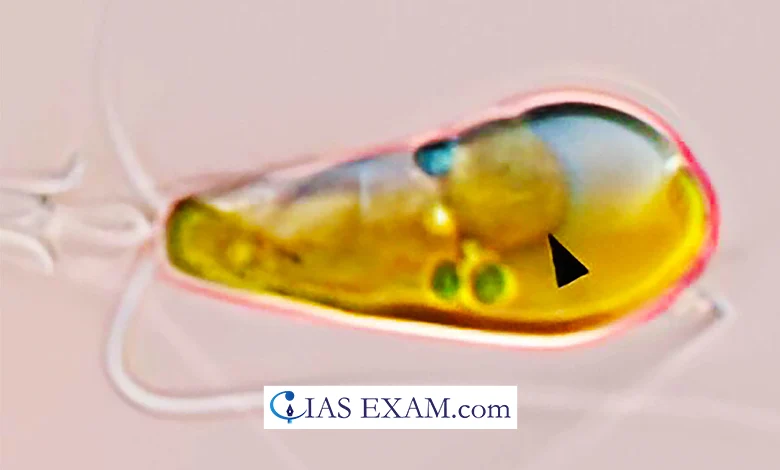
Context
Recently researchers have discovered the “nitroplast” where a prokaryotic cell is engulfed by a eukaryotic cell and also evolves into a nitrogen-fixing organelle.
Endosymbiotic theory
- A symbiotic relationship wherein one organism lives in the other is called endosymbiosis.
- The endosymbiotic idea states that organelles like mitochondria and chloroplasts, the web of cellular respiration and photosynthesis, were once free-living bacteria that were later ingested by the recipient cells.
- Organelles are small, specialised structures in cells which perform like organs by carrying out particular tasks.
- Unlike mitochondria and chloroplast endosymbiosis, which passed off almost two billion years back, nitroplast’s evolution as an organelle is fairly current (about 100 million years).
What is Nitrogen Fixation?
- Nitrogen gasoline makes up about 78% of the Earth’s environment by extent. It is a key thing in proteins and DNA of all dwelling organisms.
- Nitrogen fixation is the method through which nitrogen is taken from its molecular form (N2) within the atmosphere and converted into nitrogen compounds useful for other biochemical processes.
- Bacteria and archaea help convert atmospheric nitrogen fuel to ammonia by nitrogen fixation (or ammonification) to make nitrogen usable for plants.
- Legumes, a class of plants in the circle of relatives Fabaceae, endure the nitrogen-fixing microorganism in their root nodules.
- Ammonia is transformed to nitrites and nitrates (nitrification) then back into atmospheric nitrogen (denitrification) with the help of bacteria to complete the cycle.
- In marine environments, bacteria and archaea also are concerned in ammonification, nitrification, and denitrification.
Discovery of Nitroplast
- In 1998, a cyanobacterium Candidatus Atelocyanobacterium thalassa or UCYN-A became determined inside the water of the Pacific Ocean able to fix nitrogen.
- Later, the marine algae Braarudosphaera Bigelowii was observed as the host for UCYN-A.
- The recent discovery extends the latest reports of a nitrogen-fixing cyanobacterium in marine algae and establishes it as a brand new organelle.
- During a symbiont’s transformation into an organelle inside a eukaryotic cell, its genome becomes frugal, encoding fewer proteins and making use of the host cell’s proteins to carry out some of its critical abilities.
- It was established as a symbiotic cyanobacterium for marine single-cell eukaryotic algae.
Criteria of Bonafide organelles
- The organelle ought to be incorporated into the function and overall architecture of the host cell.
- Proteins ought to be imported to the organelle from the host cell to perform some of its features.
- Organelles need to be in sync with the host cell’s growth.
- Organelles need to be inherited in the newly dividing cells throughout the host cell department.
- All these above standards had been glad through Nitroplast.
Implications on Agriculture
- The Haber-Bosch method for synthesizing ammonia from nitrogen and hydrogen has revolutionized agriculture by introducing ammonia as a fertilizer.
- However, it contributes to water and air pollutants and weather exchange with its carbon dioxide emissions.
- The modern discovery has the capacity to use the Nitroplasts as impartial nitrogen-solving organelles.
Source: The Indian Express





.png)



